Country guides

Things to do in Jordan
The quality of sightseeing opportunities in Jordan often takes visitors by surprise, especially those expecting only desert landscapes. While the natural beauty of places such as Wadi Rum is indeed striking, the country is also rich in ancient cities, archaeological wonders and historic landmarks.
Jordan is widely regarded as one of the safest and most welcoming destinations in the Middle East, with a reputation for hospitality and political stability.
Travellers can explore fascinating castles, Roman ruins and desert fortresses, many of which are easily accessible from the capital, Amman, or from the Red Sea city of Aqaba. These excursions can be done by local taxi, rental car, 4x4, or even by camel, which is a nod to traditional Bedouin ways of life.
Beyond its desert charm, Jordan has unique water experiences. The Red Sea, at the southern tip of the country, boasts crystal-clear waters and vibrant coral reefs that make it a popular spot for snorkelling and scuba diving. The Dead Sea, on the other hand, offers a truly one-of-a-kind experience: floating effortlessly in its extremely salty waters at the lowest point on Earth.
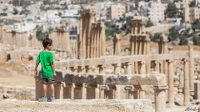
Jerash
Situated about 31 miles (50 km) north of Amman is one of Jordan's top attractions: the ancient city of Jerash. Often regarded as one of the best-preserved Roman provincial cities i…
Jerash
Situated about 31 miles (50 km) north of Amman is one of Jordan's top attractions: the ancient city of Jerash. Often regarded as one of the best-preserved Roman provincial cities in the world, Jerash owes its exceptional state to centuries of abandonment, limited urban development, and gradual burial under earth and debris. Its magnificent baths, theatres, temples, arches, colonnaded streets, and stone-rutted roads have long attracted scholars and tourists alike to admire one of the most complete cities of the Roman Decapolis. Archaeological discoveries indicate human activity in the area since the Neolithic Age, though the city itself flourished during the Greco-Roman period. Today, visitors can marvel as the ancient amphitheatre comes to life during the annual Jerash Festival of Culture and Arts, where artists from around the globe sing, dance, act, and perform in a celebration of Jordanian and international culture.
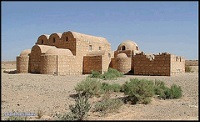
Desert Castle Loop
Stretching east of Amman toward Saudi Arabia and Iraq lies a vast desert plain dotted with historic castles, forts, baths, and palaces known as the Desert Castles. Built mostly dur…
Desert Castle Loop
Stretching east of Amman toward Saudi Arabia and Iraq lies a vast desert plain dotted with historic castles, forts, baths, and palaces known as the Desert Castles. Built mostly during the Umayyad period (7th to 8th centuries AD), these sites served varied purposes including retreats, military outposts and caravan stops. Qasr Mushatta is the largest and most elaborate, though never completed, with its façade now in Berlin's Pergamon Museum. The best-preserved is Qusayr Amra, a UNESCO World Heritage Site famed for its domed bathhouse and colourful frescoes. Other notable sites include Qasr al-Azraq, once Lawrence of Arabia's base, Qasr al-Kharana, and the partially restored Qasr al-Hallabat.
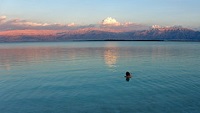
The Dead Sea
Situated about 28 miles (45 km) southwest of Amman lies the famous Dead Sea, the lowest point on Earth at around 1,410 feet (430m) below sea level. With a salt concentration nearly…
The Dead Sea
Situated about 28 miles (45 km) southwest of Amman lies the famous Dead Sea, the lowest point on Earth at around 1,410 feet (430m) below sea level. With a salt concentration nearly ten times that of the ocean, it's devoid of fish or plants, though microscopic organisms thrive. Its mineral-rich waters and black mud have made it an internationally renowned destination since ancient times, prized for their healing properties and the unique experience of floating effortlessly. Most visitors head to the northern shore resort area of Sweimeh, where they can enjoy beaches, restaurants, showers and spa treatments. Accommodation, including medical therapies, is available at the Dead Sea Spa Hotel and other nearby resorts.
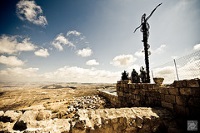
Mount Nebo
Mount Nebo is one of Jordan's most sacred sites, traditionally believed to be the place where Moses viewed the Promised Land before he died, though his exact burial site remains un…
Mount Nebo
Mount Nebo is one of Jordan's most sacred sites, traditionally believed to be the place where Moses viewed the Promised Land before he died, though his exact burial site remains unknown. Located on the edge of a plateau about six miles (10km) from Madaba, Mount Nebo offers breath-taking views across the Jordan Valley and the Dead Sea, with Jerusalem sometimes visible on a clear day. A modern shrine, built over the remains of a 6th-century Byzantine monastery, protects the site's original floor mosaics. In the surrounding grounds stands the symbolic Serpentine Cross, representing both Moses' bronze serpent and the crucifixion of Christ.

Wadi Rum
Lying 42 miles (68km) north of Aqaba, Wadi Rum is acclaimed as one of the most breath-taking desert landscapes in the world and is a major tourist destination in Jordan. Towering s…
Wadi Rum
Lying 42 miles (68km) north of Aqaba, Wadi Rum is acclaimed as one of the most breath-taking desert landscapes in the world and is a major tourist destination in Jordan. Towering sandstone and granite mountains rise from pink desert sands, creating a vast, silent wilderness that leaves a lasting impression. The area was famously traversed by Lawrence of Arabia during the Arab Revolt, and today, visitors can explore the terrain by camel, 4x4 vehicle, or on foot. Climbers take on the challenge of Jabal Umm ad Dami, Jordan's highest peak, and natural wonders such as rock bridges. Wadi Rum is home to Bedouin families who warmly welcome guests with mint tea and traditional hospitality, often around a fire under the starry sky.
Website www.wadirum.jo
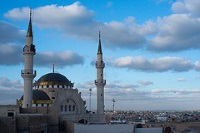
Madaba
Madaba is most famous for its spectacular Byzantine and early Islamic-era mosaics from the 5th to 8th centuries, found throughout the town's churches and historic buildings. Locate…
Madaba
Madaba is most famous for its spectacular Byzantine and early Islamic-era mosaics from the 5th to 8th centuries, found throughout the town's churches and historic buildings. Located just 19 miles (30 km) south of Amman, it's home to the renowned 6th-century Madaba Map, a detailed mosaic depicting Jerusalem and the Holy Land. One of the town's most beautiful mosaics decorates the floor of the Church of the Apostles, while the Archaeological Park features a rich collection of mosaics viewed from above via elevated ramps. The Greek Orthodox Church of St George houses the Madaba Map, the earliest surviving original map of the Holy Land, laid around 560 AD.
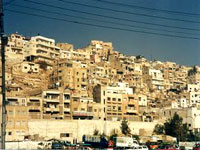
Amman
Amman is one of the world's oldest inhabited sites, with evidence of human settlement dating back to the Neolithic period. Today, it's a thriving commercial and administrative cent…
Amman
Amman is one of the world's oldest inhabited sites, with evidence of human settlement dating back to the Neolithic period. Today, it's a thriving commercial and administrative centre where travellers will find modern facilities, historical attractions, and a longstanding tradition of hospitality. Faded minarets, bustling pavement markets, Arabian sweet shops, and ancient ruins contrast wonderfully with contemporary architecture, fashionable boutiques, and international restaurants, creating a captivating blend of old and new. The city also makes an excellent base for visitors, with most destinations in Jordan reachable within five hours by car.
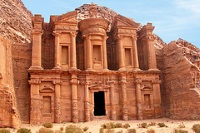
Petra
Carved into rose-red cliffs and surrounded by rugged mountains, Petra is Jordan's most iconic attraction. Near the modern town of Wadi Musa, this ancient city was founded over 2,00…
Petra
Carved into rose-red cliffs and surrounded by rugged mountains, Petra is Jordan's most iconic attraction. Near the modern town of Wadi Musa, this ancient city was founded over 2,000 years ago by the Nabataeans, a nomadic Arab tribe who made it their capital. Petra flourished as a key stop on the trade routes between Arabia and the Mediterranean, growing rich from caravans carrying spices and incense. The city's wealth is reflected in its breath-taking tombs, temples, and buildings carved directly into stone. Today, visitors explore a vast landscape of rock-cut wonders, hidden canyons, and masterful ancient engineering.


